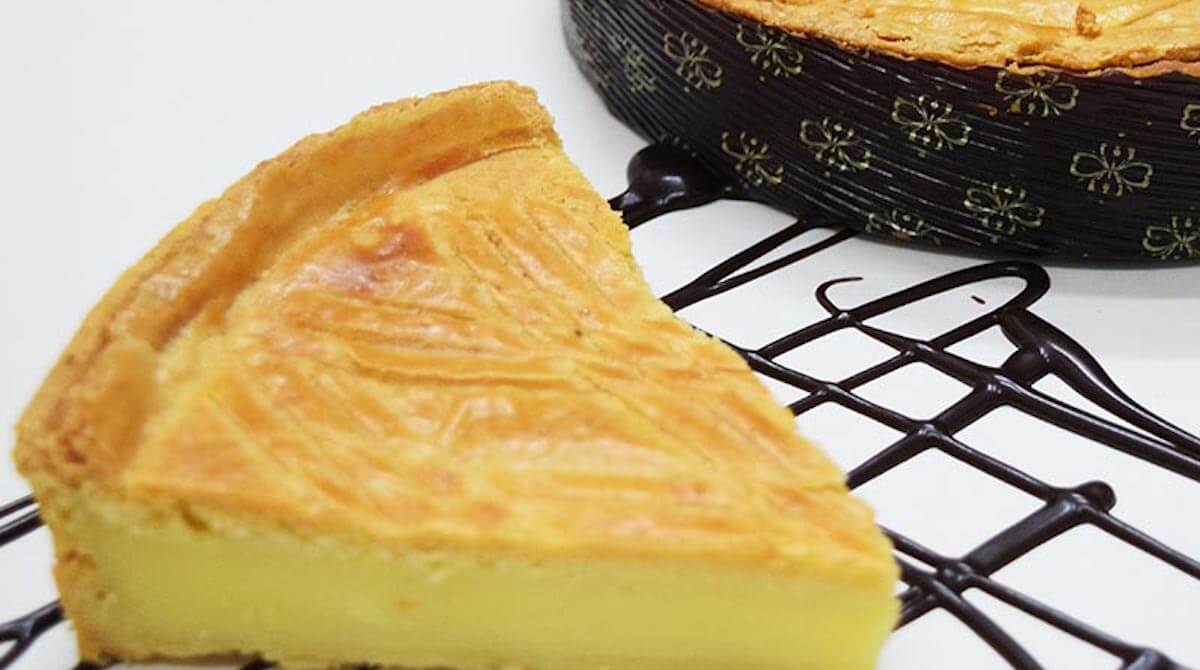These are the typical sweets and desserts of Bilbao
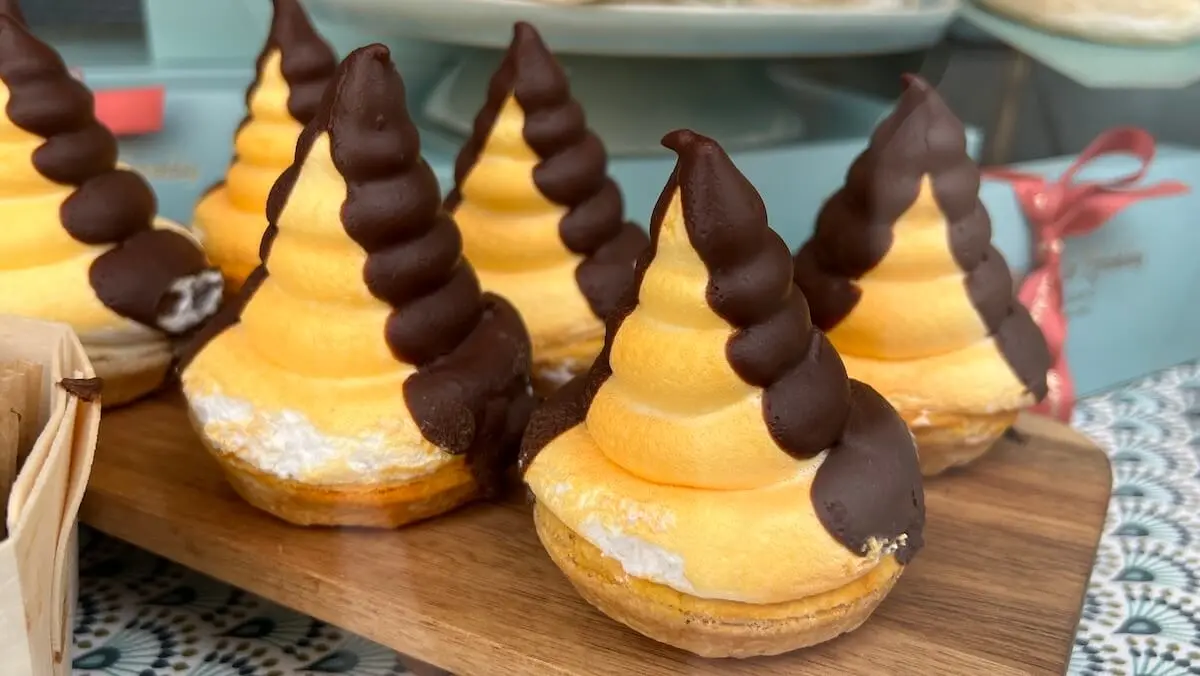
Typical Bilbao dishes such as Cod a la Vizcaína or in Porrusalda, Hake Kokotxas in green sauce, some good crabs and unbeatable pintxos are easy to find on any corner of Bilbao. It is not necessary to go to an expensive restaurant in this city to taste these Basque recipes.
In most of these places, you can accompany their dishes with a good txakoli wine or a Bilbao cider, which makes an excellent combination. And not to mention the sweets! Bilbao has numerous pastry shops and restaurants where you can enjoy a good dessert.
In this article we will show you the most delicious and symbolic sweets of Bilbao and Bizkaia cuisine, explaining a little about their history and ingredients. Prepare your palate and a glucometer because this will be a very sugary post!
- Carolina
- Pastel de arroz
- Bollo de mantequilla
- Pastel ruso
- Macarrones de San Blas
- Baldosas
- Pastel Vasco
Carolina
The origin of this dessert is due to a pastry chef from Bilbao whose daughter wanted a cake with a lot of meringue. The pastry chef, to please her, invented this dessert and then took his idea to his pastry shop, becoming a famous dessert in the city and named after his daughter: Carolina.
The Carolina is a pyramid-shaped cake about 10 cm high. Its tart-shaped puff pastry base supports the pyramid made of meringue which has two sheets of yolk cream and chocolate that are dropped from the tip of the pyramid onto the cake. Then it cools and forms its particular decoration. They are a must in any restaurant in the city.
There is a custom that when Athletic Club de Bilbao reaches a final, the carolinas are decorated with red and white meringue (the team's colors) and they place txapelas and scarves of the same color on top. A whole hobby brought to the kitchen!

Pastel de arroz (Rice cake)
Curiously, this Bilbao dessert does not contain any rice: it is a tart made from shortcrust pastry or puff pastry that contains pastry cream inside. This sweet is a complement to the breakfast or snack of many Bilbao residents.
Rice cake comes from the Philippines and was introduced by the Basque Arrantzales who came from that country during the 19th century. It is called rice cake since the original tartlet was made with rice flour. However, today they use wheat flour for its preparation.
Keep in mind that these cakes are very similar to the Belgian Riistjjaartje and the Portuguese Pastel de Belem, so don't be confused when you enter a pastry shop in Bilbao and think that the dessert is from outside. It is 100% Bilbao!
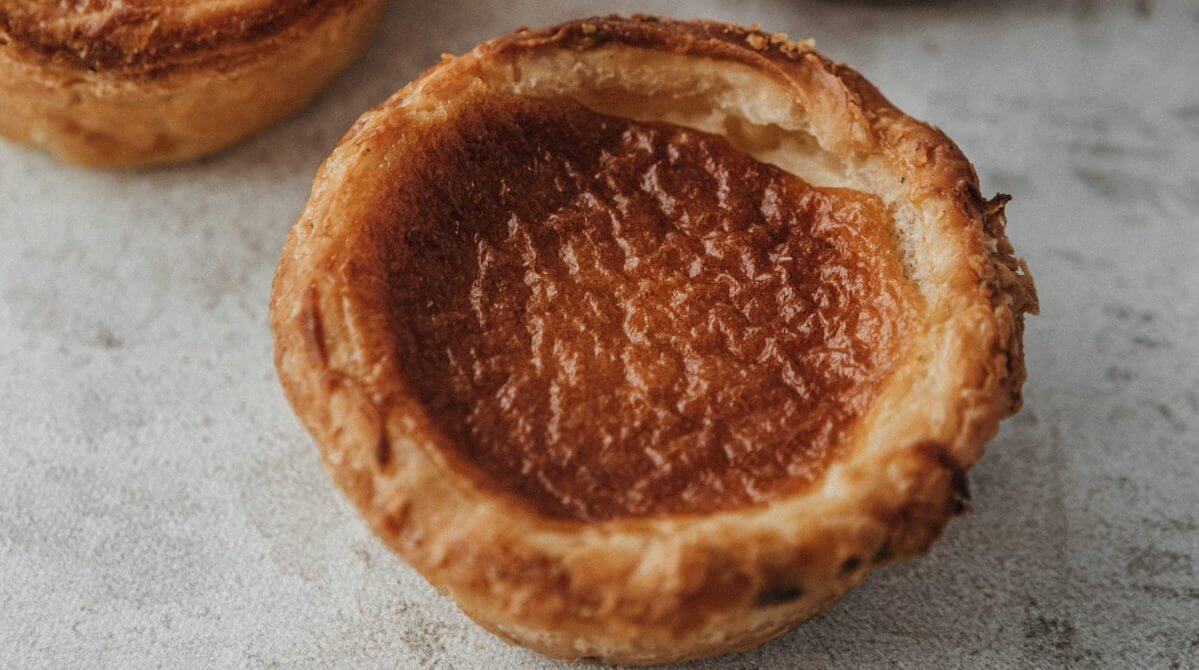
Bollo de mantequilla (Butter cake)
This dessert is the most representative sweet of Bilbao. It consists of a milk brioche bread with a layer of sugar and cream, and inside comes the surprise: a delicious butter cream made with yolks, hot syrup and browned butter. A cream that has nothing to envy of pastry creams.
Although its origin dates back to the beginning of the 19th century, this dessert has perhaps been made in Bilbao for longer. Another source indicates that this dessert was made by two Swiss brothers, Bernardo Pedro Franconi and Francesco Matossi, in the Swiss Pastry Shop.
If you try it alone, you can taste its great flavor. Although a butter bun accompanied with a good coffee is an exquisite combination. It is very common to find it in all the bakeries in Bilbao.
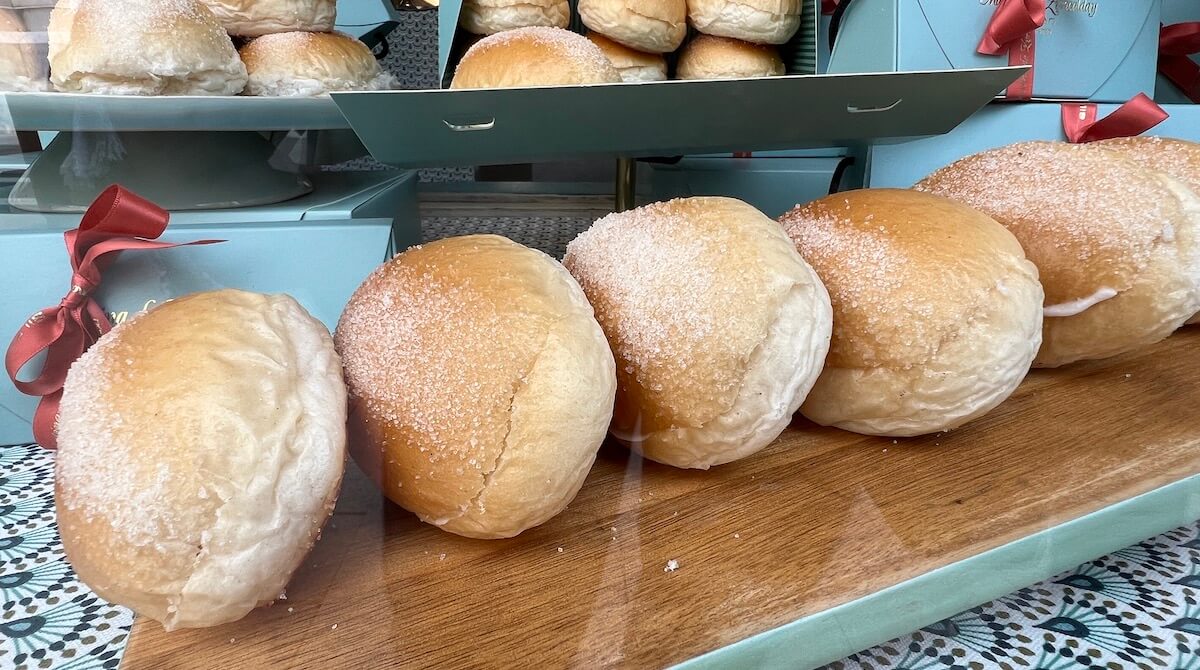
Pastel ruso (Russian cake)
Although its origin is neither Bilbao nor Spanish, it is present in all the pastry shops in Bilbao.
It is a cake with an almond and hazelnut meringue, and with an extra layer of sweet butter cream. Some Russian cakes also come with powdered sugar on top of the meringue.
It is said that Eugenia de Montijo, wife of Napoleon III, gave a cake to the Russian Tsar Alexander II for his arrival in France, since the Universal Exhibition of 1855 was being held in this country. This cake was called "Russian Imperial Cake ". The recipe spread throughout France and, due to its proximity to the French country, the recipe also reached Bilbao.
It is worth noting that many diners consider the Russian Cake from Bilbao to be the best of all.
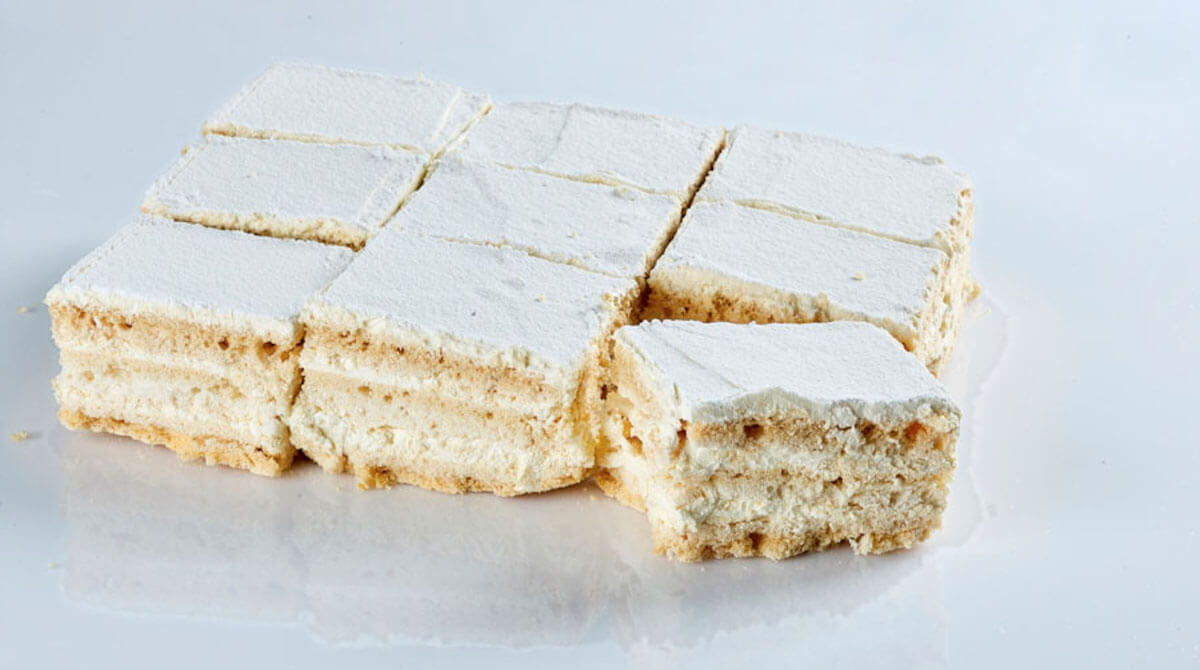
Macarrones de San Blas
San Blas macarons are a sweet paste very similar to French macarons.
They are made from sugar, cinnamon and almonds, and these cookies have a hard texture on the outside and soft on the inside. This dessert is usually eaten during the festivities of February 3, San Blas Day; although in pastry shops they are available all year round.
Saint Blaise was said to have been an Armenian doctor and bishop who reportedly had miraculous powers, but the doctor became famous for curing a child who had choked on a fish bone. From there, it is said that eating a blessed macaroni will cure the throat ailments of whoever eats it.
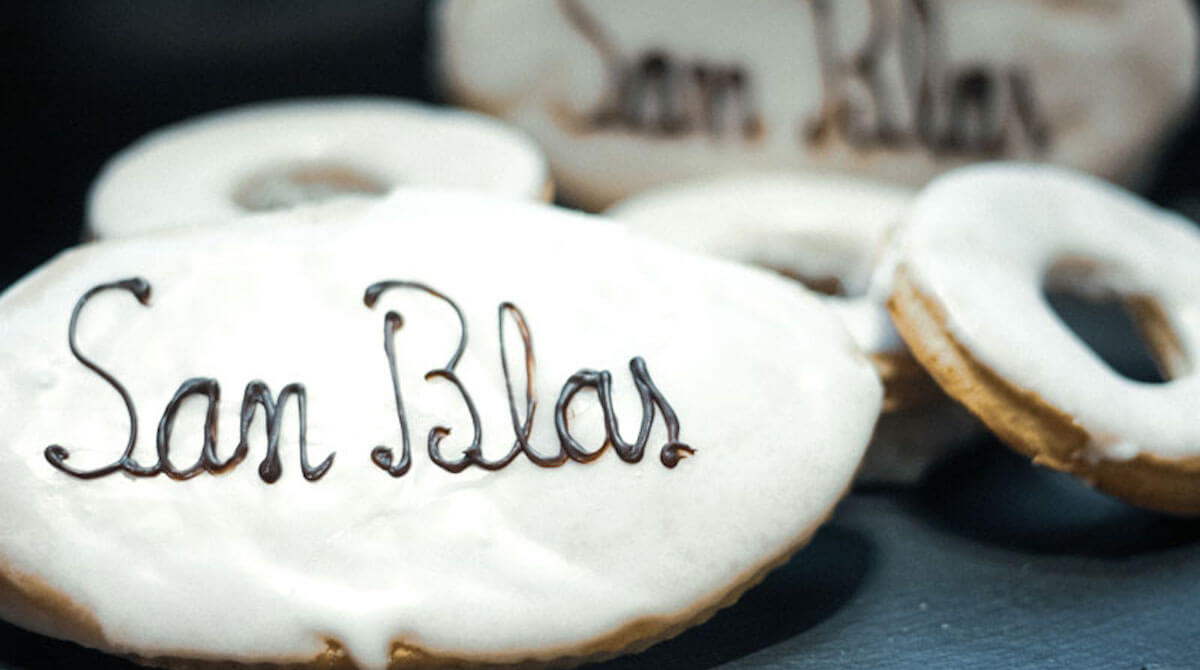
Baldosas
Despite having the same name as the surface we walk on, the Bilbao tiles refer to a sweet.
It is a coffee and caramel mousse covered with toffee and a layer of dark and white chocolate that gives it that characteristic grayish tone. A good portion of Bilbao tile is usually enjoyed cold and with a good coffee or hot chocolate.
Although it has the same name and the same size as a ceramic tile, it is actually a dessert.
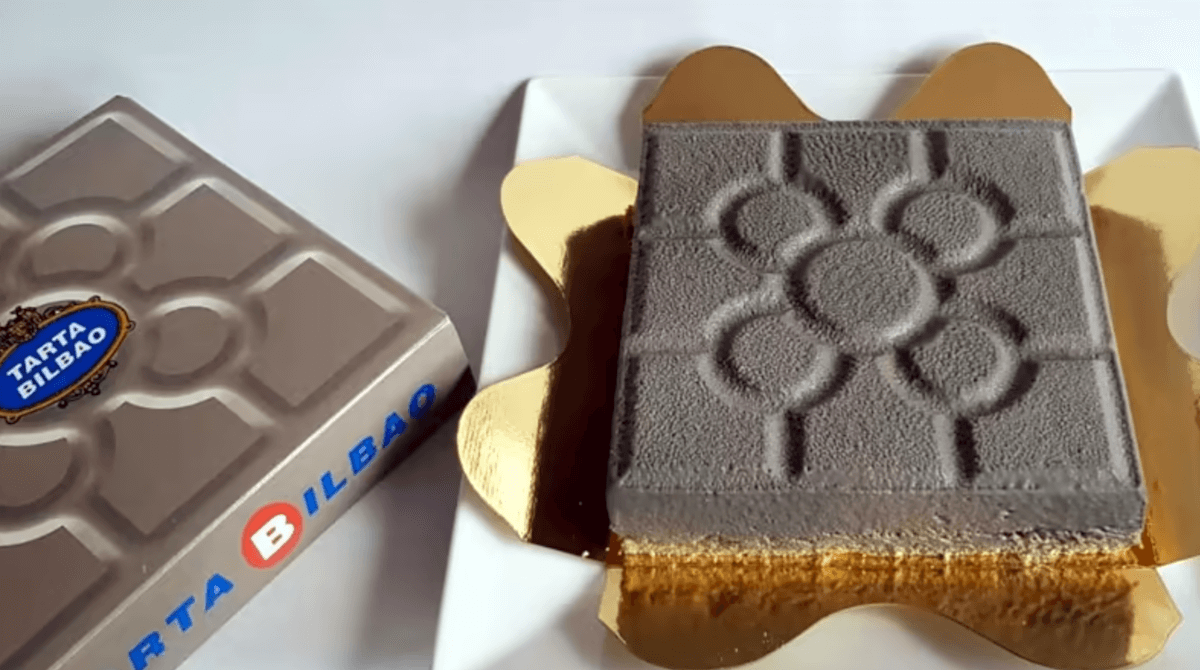
Pastel Vasco (Basque cake)
Basque cake is a typical sweet made with wheat flour, eggs and butter, usually filled with pastry cream.
This dessert is originally from Lapurdi (French Basque Country). Although other recipes include cherries, raspberries, apricots and figs (which are the original recipes) starting in the 19th century, the use of pastry cream became popular in the preparation of this dessert.
The French version of this dessert commonly has a layer of jam or jam and normally to identify the filling of the cake it is usually marked with a lauburu if it is filled with black cherry jam or with a hatch if it is filled with pastry cream.
It is also said that the black cherry jam for the filling should be made only with cherries from the Basque Country.
